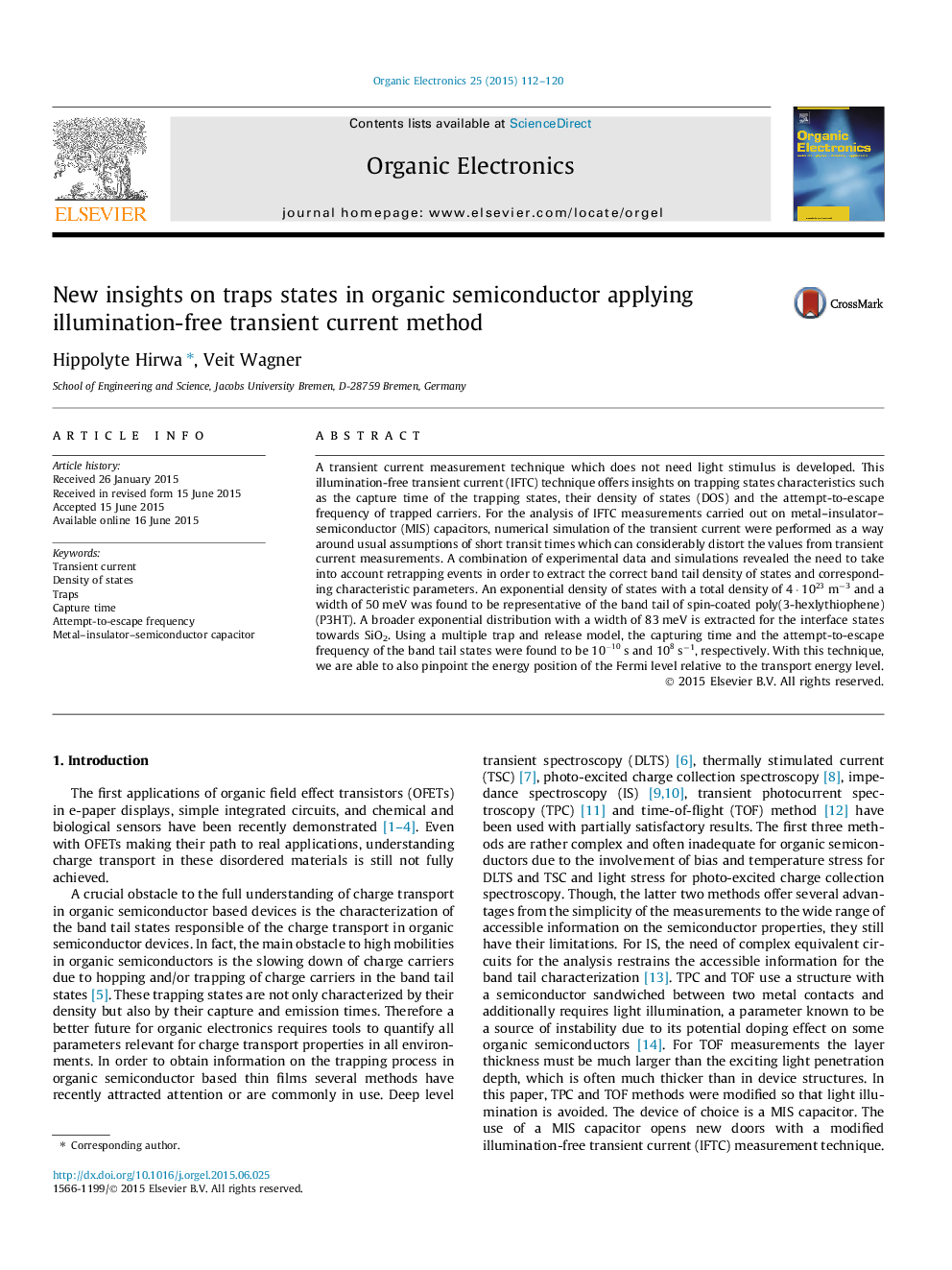| کد مقاله | کد نشریه | سال انتشار | مقاله انگلیسی | نسخه تمام متن |
|---|---|---|---|---|
| 1263629 | 1496832 | 2015 | 9 صفحه PDF | دانلود رایگان |
• A light stimulus free transient current measurement technique is proposed.
• Numerical simulations of transient current measurements validate ITFC.
• Experimental data are perfectly matched by simulations.
• DOS of trapping states is calculated.
• Parameters characteristic of the trapping states are determined.
A transient current measurement technique which does not need light stimulus is developed. This illumination-free transient current (IFTC) technique offers insights on trapping states characteristics such as the capture time of the trapping states, their density of states (DOS) and the attempt-to-escape frequency of trapped carriers. For the analysis of IFTC measurements carried out on metal–insulator–semiconductor (MIS) capacitors, numerical simulation of the transient current were performed as a way around usual assumptions of short transit times which can considerably distort the values from transient current measurements. A combination of experimental data and simulations revealed the need to take into account retrapping events in order to extract the correct band tail density of states and corresponding characteristic parameters. An exponential density of states with a total density of 4·10234·1023 m−3 and a width of 50 meV was found to be representative of the band tail of spin-coated poly(3-hexlythiophene) (P3HT). A broader exponential distribution with a width of 83 meV is extracted for the interface states towards SiO2. Using a multiple trap and release model, the capturing time and the attempt-to-escape frequency of the band tail states were found to be 10-1010-10 s and 108108 s−1, respectively. With this technique, we are able to also pinpoint the energy position of the Fermi level relative to the transport energy level.
Figure optionsDownload as PowerPoint slide
Journal: Organic Electronics - Volume 25, October 2015, Pages 112–120
